There are many, many ways that a bicycle tire can go flat. Thorns, goat heads, glass, nails … bicycle rides are literally littered with hazards for your thin bike tires. Fortunately, Slime Tube Sealant can prevent and repair flat bicycle tires instantly for up to two years.
Installing Slime Tube Sealant into your bicycle tires is simple and fast. Watch this short installation video below, or scroll down for step-by-step photo instructions. No more flats!
Step 1: Position the tire Slime can be inserted with the valve stem located in any position, but it works best if you position the valve stem so it sits in the upper half of the tire.
The black cap on your bottle of Slime is a valve core removal tool. Twist it off the bottle and use the knobby tool in the center to engage the valve core.
If you have Schrader valves: Take the valve cap off your valve stem. When you look inside the top of the tire valve stem, you will see a metal cylinder in the very center. This is the valve core and it needs to be removed in order to install Slime. Slowly twist the tool counter-clockwise to remove your valve core.
If you have Presta valves: Using your fingers, gently twist the knobby ball near the top of your valve core to remove it. CAUTION: Not all tubes have removable valve cores. If your valve cores are fixed (they won’t twist off), then you will not be able to install Slime (we recommend our pre-filled, self-sealing Slime tubes instead).
You will know you are successfully removing the valve core when air starts hissing out of your tire.
Step 3: Deflate Your TireYour tire must be as flat as possible to inject the Slime. Allow the air to slowly escape from the tire and set aside the valve core (you will need this piece again later).
Allow the air to slowly escape from the tire and set aside the valve core (you will need this piece again later).
Locate the thorn, nail or other offending object that caused your tire to go flat. If possible, remove it from the tire.
Unscrew the white cap from the top of the bottle, peel off the white seal and then re-attach the white cap.
Remove the clear tube from side of the bottle and attach one side to the top of the white bottle cap. Attach the other side to the valve stem on your tire. The white tube fits perfectly over Schrader valves. If you have Presta valves, we recommend you attach a Presta valve adapter to the white tube for a tighter fit.
Squeeze in the appropriate amount of Slime. You can use the chart on the back of your bottle to determine how much Slime you need, or you can use our Slime calculator. In general, bike tires need 4 oz. of sealant each.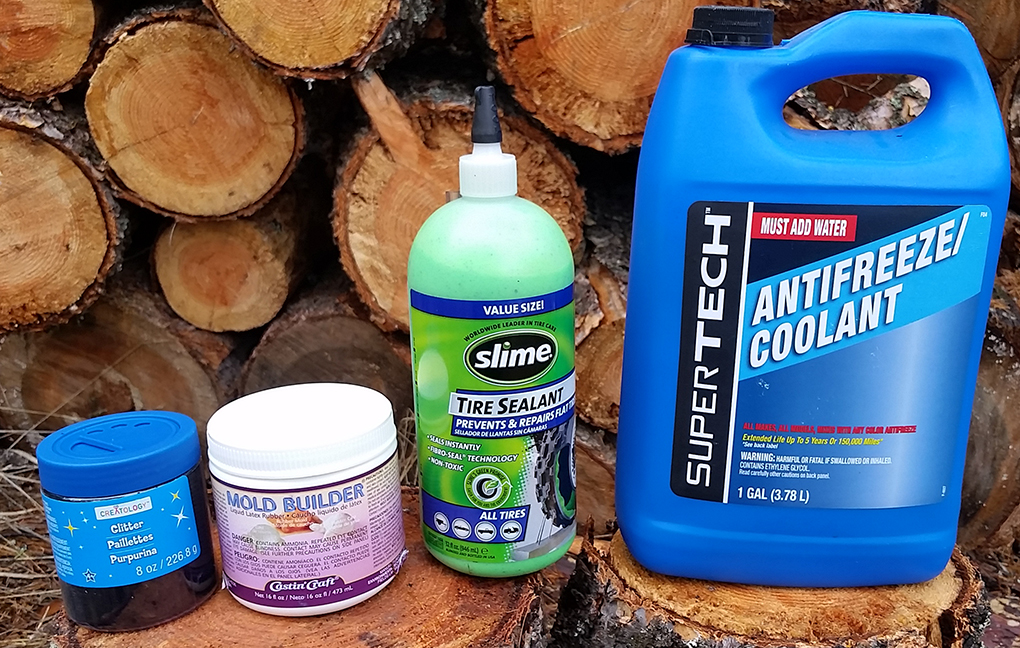 If you are using the gallon product of Slime, then one pump equals approximately 1 oz of Slime.
If you are using the gallon product of Slime, then one pump equals approximately 1 oz of Slime.
When it comes to bicycles, you can inject the sealant directly into the tube before inserting the tube into the wheel, or you can inject the sealant into a tube that is already pre-installed into the wheel.
Remember that little valve core you removed in Step 2? Time to put it back in! Using the same black tool from the cap of the bottle (or your fingers if you have Presta valves), screw the valve core back into the valve stem by turning clockwise until tight. If any Slime has oozed out while installing the valve core, simply wipe away with a cloth.
Using your favorite tire inflator, air up the tire to the recommended air pressure. You can find this measurement range listed on the sidewall of your bicycle tire.
To properly spread the sealant around the inside of your tire, spin the tire quickly a few times.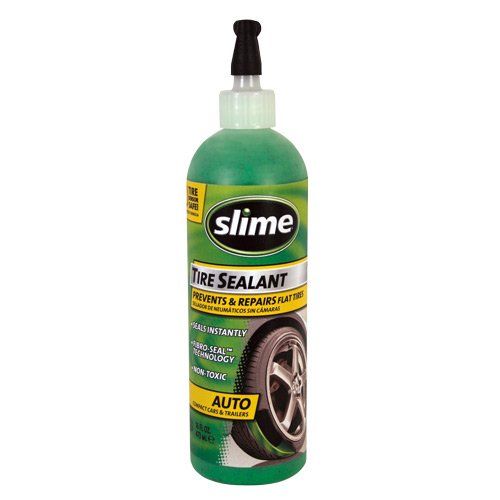
Congratulations! You have successfully installed Slime and repaired your flat tire!
Not interested in installing Slime sealant yourself? Or stuck with fixed Presta valve cores? Don’t worry, you can still prevent flats for two years! Simply install Slime pre-filled tubes (extra-strong because there is Slime inside!).
You’ve reached for the bottle to fix or prevent flat tires – smart choice! Whether this is an emergency repair (yellow label bottle), or you are preventing flats for up to 2 years (red, blue or black label bottle), the Slime installation process is the same.
Slime tire sealant is easy to install, cleans up with water and will get you back on the road quickly. All you need is the bottle and a tire inflator. Let’s get started:
Step 1: Position the TireSlime can be inserted with the valve stem located in any position, but it works best if you position the valve stem so it sits in the upper half of the tire.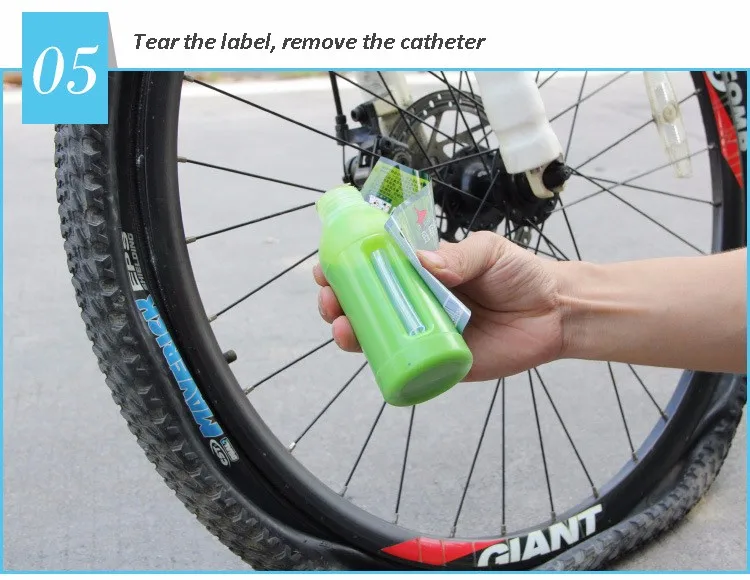
Step 2: Remove the Valve Core
Take the valve cap off your valve stem. When you look inside the top of the tire valve stem, you will see a metal cylinder in the very center. This is the valve core and it needs to be removed in order to install Slime.
The black cap on your bottle of Slime is a valve core removal tool. Twist it off the bottle and use the knobby tool in the center to engage the valve core. Slowly twist the tool counter-clockwise to remove your valve core. You will know you are successfully removing the valve core when air starts hissing out of your tire.
Your tire must be as flat as possible to inject the Slime. Allow the air to slowly escape from the tire and set aside the valve core (you will need this piece again later).
Step 4: Remove the Puncturing ObjectLocate the screw, nail or other offending object that caused your tire to go flat. If possible, remove it from the tire.
If possible, remove it from the tire.
Unscrew the white cap from the top of the bottle, peel off the white seal and then re-attach the white cap. Remove the clear tube from side of the bottle and attach one side to the top of the white bottle cap. Attach the other side to the valve stem on your tire.
Squeeze in the appropriate amount of Slime. You can use the chart on the back of your bottle to determine how much Slime you need, or you can use our Slime calculator. If you are using the gallon product of Slime, then one pump equals approximately 1 oz of Slime.
If your tire has tubes (like on a bicycle or dirt bike), you can inject the sealant directly into the tube before inserting the tube into the wheel, or you can inject the sealant into a tube that is already pre-installed into the wheel.
Remember that little valve core you removed in Step 2? Time to put it back in! Using the same black tool from the cap of the bottle, screw the valve core back into the valve stem by turning clockwise until tight. If any Slime has oozed out while installing the valve core, simply wipe away with a cloth.
If any Slime has oozed out while installing the valve core, simply wipe away with a cloth.
Using your favorite tire inflator, air up the tire to the manufacturer’s recommended air pressure. You can find this measurement on a label typically located on the inside door jamb of the driver or passenger seat.
Step 8: Rotate the TireTo properly spread the sealant around the inside of your tire, drive approximately 0.2 miles, then stop and verify that the sealant plugged your puncture and that the tire is holding air pressure. If you are installing Slime in a bicycle, simply spin the tire to evenly distribute the sealant.
Congratulations! You have successfully installed Slime and repaired your flat tire.
If you installed the yellow label Emergency Tire Sealant formula, then please seek a professional repair within 3 days or 100 miles.
The world does not stand still.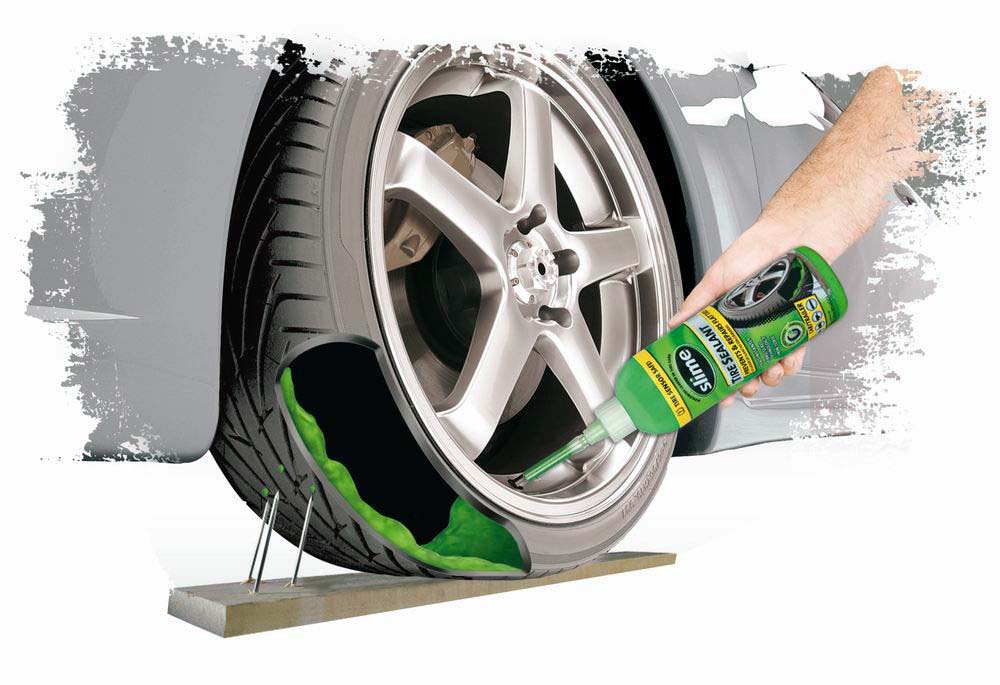 Every year, innovations and innovations appear and disappear, aimed at increasing comfort and optimizing labor costs. For almost 150 years, pneumatic tires have been used on a wide variety of vehicles, which with each generation are getting more and more perfect design and materials. But the main problem of classic tires - the possibility of a puncture, was almost completely overcome only recently, with the start of the use of wheel sealant. In the bicycle industry, this problem has always been the most acute, since bicycle tires cannot be too thick, therefore they are the least protected from damage.
Every year, innovations and innovations appear and disappear, aimed at increasing comfort and optimizing labor costs. For almost 150 years, pneumatic tires have been used on a wide variety of vehicles, which with each generation are getting more and more perfect design and materials. But the main problem of classic tires - the possibility of a puncture, was almost completely overcome only recently, with the start of the use of wheel sealant. In the bicycle industry, this problem has always been the most acute, since bicycle tires cannot be too thick, therefore they are the least protected from damage.
Bicycle Sealant is designed to reduce or virtually eliminate tire maintenance associated with hand-sealing punctures and cuts. As a result, with active skiing, it is possible to save dozens of hours per season, and along with time, nerve cells are saved, which, as you know, are not replenished.
So what is Bicycle Sealant ? What are the sealants? What sealant to buy? These and many other questions will be answered in this article.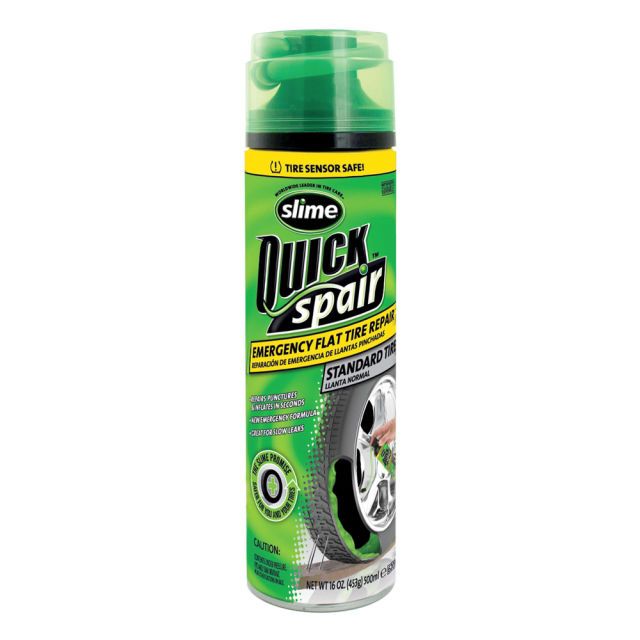
The purpose of the sealant is to quickly and permanently seal the damage in the tire. Ideally, the puncture remains completely unnoticed and does not affect the driving process in any way, unlike classic wheels without anti-puncture fluid, when the puncture must be sealed anyway in order to continue driving. The effectiveness of a sealant is directly dictated by its composition.
Composition bicycle sealants are latex, gel and others. Often manufacturers are reluctant to share the composition of their products, but sometimes they do indicate what their sealants are made of. By indirect signs, you can determine what type the existing bicycle sealant belongs to. So, if the liquid is translucent and resembles liquid sour cream or jelly in consistency, then this is most likely a gel sealant. If the composition is white or painted in some whitish color, and the consistency is closer to the characteristics of water, then you most likely have latex sealant . Additional additives can greatly affect the properties of the finished product, therefore it is better to learn about the consumer qualities of a sealant from more experienced cyclists or directly from sales consultants.
Additional additives can greatly affect the properties of the finished product, therefore it is better to learn about the consumer qualities of a sealant from more experienced cyclists or directly from sales consultants.
Bicycle Sealants are divided into three groups: Tube Sealants , Tubeless Sealants and Universal Sealants.
Typically, chamber sealants consist of a thick, gel-like base and small, hard synthetic particles or fibers that seal punctures. They are quite durable and can serve from six months to a whole season. Usually, the chamber sealant works for the same period as the chamber itself, where it is poured. Can seal punctures up to 2 mm. In a tubeless system, such sealants are of little use, since they do not completely dry out and do not close up the puncture.
tubeless sealants are often thinner and contain liquid latex. The principle of their work resembles rubber glue, which hardens upon contact with air and securely seals the damage in the tire. Due to their high fluidity, they do not work well in chambers. But such sealants dry out faster, and they have to be topped up from time to time. Such compounds can seal punctures and cuts up to 4 mm.
Due to their high fluidity, they do not work well in chambers. But such sealants dry out faster, and they have to be topped up from time to time. Such compounds can seal punctures and cuts up to 4 mm.
General purpose sealants that work equally well in tube and tubeless systems. Of course, it strongly depends on the specific composition, but the general trend is as follows.
Efficiency. First of all, we are interested in how the sealant will seal the damage to the tire or tube, how quickly and whether it is reliable enough. The second important factor is the maximum size of cuts that anti-puncture sealant can handle. So, with punctures from kavunts, the simplest composition will also cope, sometimes even just pure water. And cuts from 4 mm, especially on the sidewall, are the most difficult task that single compositions with extreme properties can do.
Durability. How long a portion of sealant can last after pouring is also an important factor. In addition to saving money, it is worth considering the fact that over time the properties of the mixture may disappear, the sealant may dry out or irreversibly delaminate into fractions. This should be monitored so as not to be at the most inopportune moment with empty wheels.
In addition to saving money, it is worth considering the fact that over time the properties of the mixture may disappear, the sealant may dry out or irreversibly delaminate into fractions. This should be monitored so as not to be at the most inopportune moment with empty wheels.
Wide range of operating conditions. Sometimes you have to use the bike in extreme heat or, conversely, in sub-zero temperatures. If the conditions go beyond the allowable values, then the properties of the sealing composition may be lost. Some water-based formulations may lose performance at low temperatures. Typically, the manufacturer indicates the operating temperature range on the packaging. Athletes or just cyclists sometimes use CO2 systems as an emergency repair tool. If you intend to inflate the wheels in the same way, make sure the sealant is compatible with carbon dioxide.
There are many sealants for tubes and tubeless systems on the market. And which composition is best for you depends on your riding mode and the conditions in which you operate your bike. So, if you ride a bike a couple of times a month, and the routes run mainly along asphalt park paths, then there is absolutely no point in buying tubeless racing sealant. In this case, the chamber version of the wheels with chamber sealant inside is best suited.
And which composition is best for you depends on your riding mode and the conditions in which you operate your bike. So, if you ride a bike a couple of times a month, and the routes run mainly along asphalt park paths, then there is absolutely no point in buying tubeless racing sealant. In this case, the chamber version of the wheels with chamber sealant inside is best suited.
For competition, the most “evil” sealant composition is usually used, which can seal cuts up to 5 mm. But the disadvantage of this choice is the high speed of its drying. Therefore, it is necessary to add sealant to the wheel more often - once a month or two.
The answer will depend on the sealant you use, the climate you live in, the number of punctures, and the design of the tires. Hotter, drier climates will require more frequent addition of sealant, approximately every two to three months, while cooler, wetter climates may extend this period to approximately six months.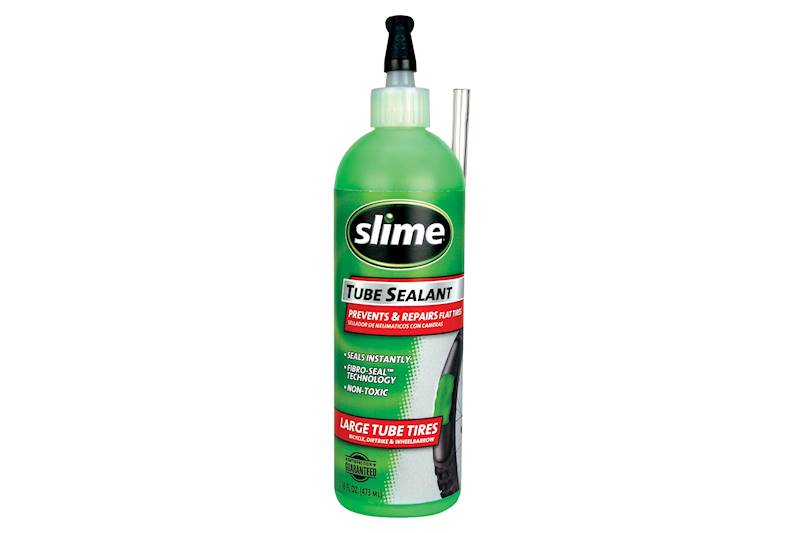 If you are surrounded by conditions with an abundance of thorns, and you notice that the sealant periodically splashes out of the wheels, then by itself, you will have to top up more often.
If you are surrounded by conditions with an abundance of thorns, and you notice that the sealant periodically splashes out of the wheels, then by itself, you will have to top up more often.
Some cyclists use standard tubeless tires that are not designed for tubeless use. This is not recommended by the manufacturer, as they do not have an additional thin rubber layer that does not allow the composition to evaporate and helps the sealant do its job. As a conclusion, it will be necessary to add anti-puncture fluid more often, and the sealing efficiency may be insufficient.
We do not recommend doing this. The composition of different mixtures includes different main and auxiliary substances, which may interact poorly with each other. Only at your own peril and risk, you can mix or add sealants of the same composition, but it is better not to experiment. No one guarantees the performance of a mixture of different types of sealants.
The minimum sealant should be poured into a road tire 30 ml, into a MTB tire 60 ml. But in order for the composition to work optimally, the following recommended ranges apply: for highways 30-60 ml, for gravels 40-80 ml, for MTBs 60-120 ml, for pluses and fat bikes 120-200 ml. The consistency of the anti-puncture fluid should also be taken into account. So a thick sealant envelops the inner surface of the tire with a thicker layer, and in order to remain a working supply of liquid, it should be poured a little more.
A layer of sealant in a rapidly rotating bicycle wheel is distributed in a narrow strip around the circumference. And the more sealant you add, the wider this strip will be, and the more efficiently it will work. There is no upper limit on the amount of anti-puncture fluid, and by pouring more than recommended, you will increase the stability of its operation and the intervals between topping up. However, this way you will carry extra weight with you. You decide.
However, this way you will carry extra weight with you. You decide.
Special measuring syringes are available for this, for example the milKit Compact system or the simpler TSI-1 Park Tool. However, none of them are perfect, and in the case of a tubeless system, the easiest way is to manually disassemble a small section of the tire on one side and assess the condition of the sealant. If the liquid has changed color or become more watery, this is a sign that you need to replace it, or simply add a new portion of sealant.
The second, even easier way is to remove the wheel and give it a good shake. If you do not hear the sound of the sealant splashing inside, then it should definitely be topped up. If a knock or rattling is heard, then the sealant has probably dried up and crumpled to “something”. In this case, you should disassemble, clean the wheel from the inside, and add the missing sealant.
With chamber sealant, you may not hear splashing due to the low fluidity of the fluid. The need to add a new portion may arise if there is a problem of constant deflation of the wheel.
The need to add a new portion may arise if there is a problem of constant deflation of the wheel.
With a tubeless system, the easiest way is to remove the tire from one side and pour the required amount of anti-puncture fluid into the resulting window. In order not to disassemble the wheel, you can try pouring sealant through the valve stem. But for this you will need a special key to unscrew the spool, a bottle with a spout and a piece of tube of the required diameter. Often such a kit already comes with a bottle of sealant. All you need is to tightly connect the tube to the bottle spout and the valve stem by unscrewing the valve itself.
A more drastic way of refilling is with a large volume syringe and a thick needle for blood sampling. Gather the required amount of sealant into the syringe, pierce the tire in the thickest place (preferably through the tread spike) and squeeze the sealant into the tire. You should be careful, as the increased pressure in the tire can escape through the syringe and stain everything around with the contents.
The sealant is added to the chamber in one of the ways: through the valve stem (as in the previous version), or through a hole in the chamber itself, which must be sealed. In any case, be sure to shake the bottle of liquid well to distribute the settled microparticles and fibers in its volume.
Sometimes you may see wet spots on the surface of your wheels, as if the tire is sweating. There is no need to worry, this occurs due to a certain porosity of the tire material. Some sealant formulations and bicycle tire models are more prone to wet spots. It should be borne in mind that such a phenomenon will require more regular topping up of the sealant.
Wipe the soiled item quickly using a damp cloth or paper towel. A cloth with mild soapy water can help. If the sealant is left to dry on clothing, it will be much more difficult or even impossible to remove the contamination. In the event that, due to a puncture, the sealant gets on the bicycle frame, the best option is to soon sprinkle water on the contaminated area. If the sealant could not be removed immediately, then a non-aggressive household detergent or brake cleaner can be used.
In the event that, due to a puncture, the sealant gets on the bicycle frame, the best option is to soon sprinkle water on the contaminated area. If the sealant could not be removed immediately, then a non-aggressive household detergent or brake cleaner can be used.
In the last decade progressive mankind pays more and more attention to the ecological footprint of human life. Since a bicycle is one of the most environmentally friendly vehicles available to a modern person, it would be relevant to find out how toxic bicycle sealants are. In short, low toxicity. Latex in the open air decomposes by 80% in 6-8 months. Synthetic-based gel sealants are usually made from substances and materials used in cosmetics, toothpaste, pharmaceuticals, and therefore their toxicity is quite low.
In addition to the base, manufacturers add additives to their products that extend the life of the mixture and increase efficiency.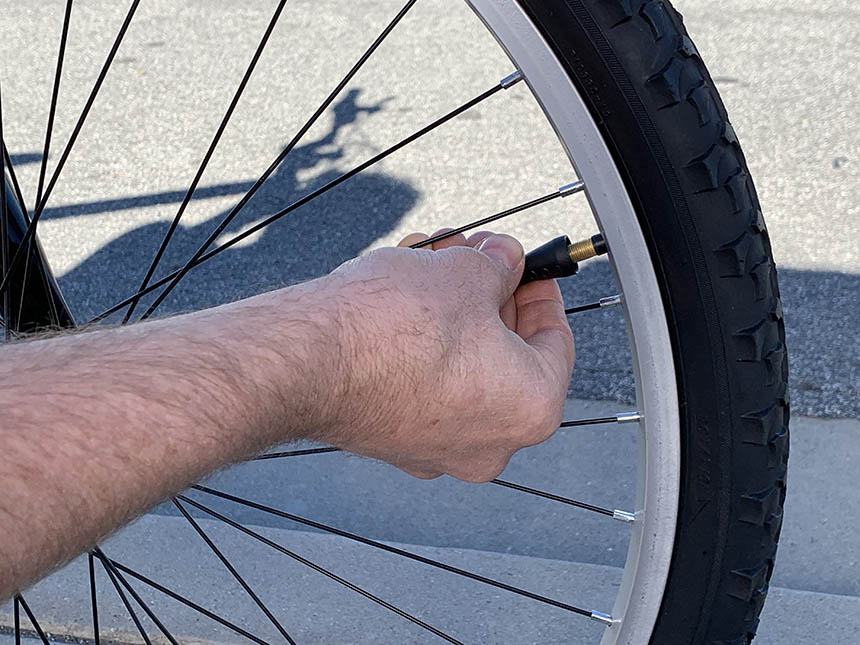 Everything is not so clear with this point, since most developers add plastic particles and fibers for this. The impact of microplastics on ecosystems is not yet fully understood and there is no clear conclusion. But many manufacturers are aware of the danger of contamination and use biodegradable materials in their products. So, for example, Panaracer uses crushed walnut shells as microparticles, and Peaty's sealants use cellulose-based granules.
Everything is not so clear with this point, since most developers add plastic particles and fibers for this. The impact of microplastics on ecosystems is not yet fully understood and there is no clear conclusion. But many manufacturers are aware of the danger of contamination and use biodegradable materials in their products. So, for example, Panaracer uses crushed walnut shells as microparticles, and Peaty's sealants use cellulose-based granules.
It is worth noting that the use of chamber sealant prolongs the life of the chamber, and as a result, fewer chambers will have to be produced and eventually discarded. And tubeless tires eliminate the need to manufacture tubes altogether, and thus, by their very existence, improve the ecological footprint.
More than twenty years have passed since bicycle wheel sealants were first introduced . Over the past ten years, the market for tubed and tubeless bicycle sealants has grown tenfold. Through experiments, manufacturers selected new compositions and formulas, improved the performance of the finished product. And now we can choose from a wide range of sealants available. Let's try to analyze common sealants in Ukraine.
Through experiments, manufacturers selected new compositions and formulas, improved the performance of the finished product. And now we can choose from a wide range of sealants available. Let's try to analyze common sealants in Ukraine.
Hutchinson is the largest French manufacturer specializing in rubber products. Many global automakers cooperate with the brand, and products are also supplied to many industries, including the aviation and space industries. The range also includes a wide selection of MTB and road tires. And although sealants are far from the main product of the company, but the deepest immersion in the subject of rubber products allows us to assert that Hutchinson PROTECT'AIR MAX sealant has the highest qualities due to the use of the best latex and stabilizing components. And the experience of use by many cyclists proves it.
The Israeli company Joe's No-Flats, sensing a gap in the market for bicycle sealants, initially focused on the production of them. In the assortment you can find both latex and latex-free and ammonia-free sealants for different riding modes. For example, Joe's Super Sealant classic latex compound is great for both tube and tubeless applications, plus it's compatible with the CO2 system. In competition and high-stress mode, Podium Sealant and Elite Racers Sealant will perform better, as they seal cuts up to 4 mm much faster. But you have to pay for the speed of work with a slightly reduced service life - the composition dries faster.
In the assortment you can find both latex and latex-free and ammonia-free sealants for different riding modes. For example, Joe's Super Sealant classic latex compound is great for both tube and tubeless applications, plus it's compatible with the CO2 system. In competition and high-stress mode, Podium Sealant and Elite Racers Sealant will perform better, as they seal cuts up to 4 mm much faster. But you have to pay for the speed of work with a slightly reduced service life - the composition dries faster.
For road bikes and gravel bikes, there is Joe's Road Leader Sealant, which works great up to 130 psi. Those who care about sustainability will love ECO Sealant, a tubeless, latex-free and ammonia-free sealant. It is absolutely harmless in application, and does not cause allergies. For tube systems, Yellow Gel is a gel-based sealant with synthetic fibers and E-Bike Commuter Gel for e-bikes and recreational bikes.
The Swiss engineers at MilKit put all their meticulousness and precision into their tubeless sealant. The result is an effective product of the highest quality. The composition of the sealant includes non-allergenic synthetic latex without ammonia. The sealant is suitable for both MTB, gravel and road. Compatible with the CO2 system and perfectly seals cuts up to 5 mm.
The result is an effective product of the highest quality. The composition of the sealant includes non-allergenic synthetic latex without ammonia. The sealant is suitable for both MTB, gravel and road. Compatible with the CO2 system and perfectly seals cuts up to 5 mm.
Like many other leading sealant manufacturers, Stan's NoTubes was founded as a result of the founder's frequent tube punctures. As a result of research and development, Tire Sealant sees the light of day. The composition includes natural eco-friendly latex, antifreeze and small synthetic particles. The composition perfectly shows itself in the fight against standard punctures, works in frost down to -35˚C degrees and does not dry out the whole skiing season.
Racers benefit from improved Race Sealant formula with more clogging particles. The number and size of crystal particles suggests filling the tire only through the bead, since the nipple can immediately become clogged. As a result, punctures and cuts up to 4 mm are sealed almost instantly.
As a result, punctures and cuts up to 4 mm are sealed almost instantly.
Slime Tire Sealant is successfully used not only for bicycles, but also for other types of wheeled vehicles. The patented formula does not harm the environment and effectively copes with punctures up to 3 mm. Sealant is designed for general use but performs best in chambers. Features a wide operating temperature range from -37˚C to 82˚C, record-breaking durability and fast puncture sealing with Fibro-Seal® fibers.
Squirt products are well known for their high quality emulsion based paraffinic lubricant. But the company does not stand still, and continues to develop innovative products for bicycles. Latex Bicycle Sealant Squirt TireSEALANT is an instant hit with avid cyclists because it is durable, effective and very affordable. The announced protection, consisting of three steps: latex, microfibers and particles of BeadBlock®, really works. The bonus of the sealant is that it washes off easily and does not pollute the environment.
The bonus of the sealant is that it washes off easily and does not pollute the environment.
Remkomplekt for Auto Overlakes Slime Smart Spair (sealant + air compressor)
Delivery in Ukraine
to 2 150 UAH
from 12 sellers from 12 GRN
Buy
BODY LAB
Tubeless Tire Repair Kit (Sealant, sealing tape, CO2 bottle(2pcs), CO2 valve), Slime 9Ol000
In stock
Delivery across Ukraine
for 731 UAH
from 3 sellers
731 UAH
Buy
BeeInSportOl000
Delivery across Ukraine
646 UAH
Buy
Velosiped.com
Tubeless tire repair kit (Sealant, sealing tape, CO2 bottle (2pcs), CO2 valve), Slime 9Ol000
Buy
LLC "TERIOS"
Anti-puncture liquid for Slime chambers, 3.8l Sealant for chambers
In stock
Delivery across Ukraine
for 3 225 UAH
from 3 sellers
3 225 UAH
Buy
BeeinSPort online store
Remkomplekt for free tires (5pcs), Slime
in warehouse
Delivery
to 129 GRN
from 12 sellers from 12 sellers from 12 sellers from 12 sellers from 12 sellers from 12 sellers from 12 sellers from 12 sellers from 12 sellers from 12 sellers from 12 sellers from 12 sellers from 12 sellers
129 UAH
Buy
Sportinvent - sports online store
Anti-puncture fluid for Slime cameras, 3. 8l
8l
In stock
Delivery across Ukraine
UAH 3,000
Buy
Velostrana - official bike shop. Sale of bicycles and components with delivery in Ukraine
Anti-puncture liquid Slime, 19l
In stock
Delivery in Ukraine
14 000 hryvnia
Buy
Velostrana - official bike shop. Sale of bicycles and accessories with delivery in Ukraine
Anti-puncture liquid for tubeless tubes Slime, 3.8l
In stock
Delivery in Ukraine
3 288 — 3 655 UAH
from 12 sellers
3 288 UAH
Buy
Velostrana - official bike shop. Sale of bicycles and components with delivery in Ukraine
Antro -resistant fluid for Slime Bank -Cameron, 19l
in warehouse
Delivery in Ukraine
14 265 UAH
from 12 sellers
14 200 UAH
Buy
Cycling Strandna - official bike shop.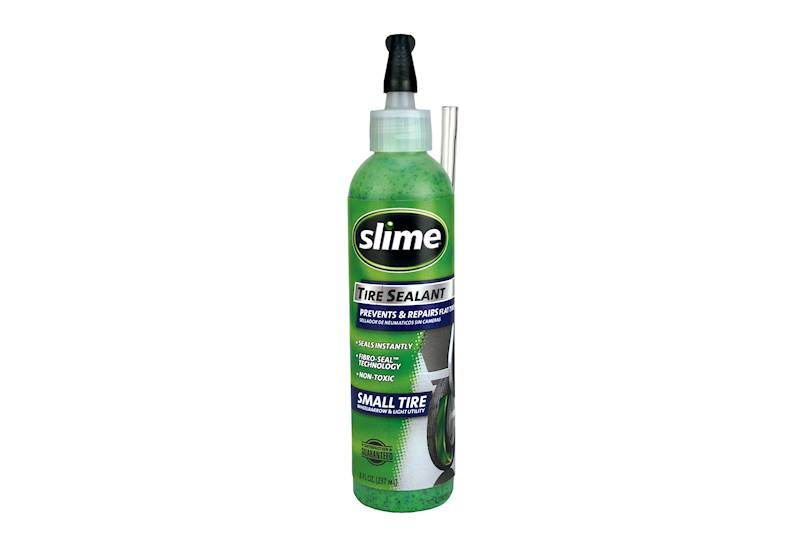 Sale of bicycles and accessories with delivery in Ukraine
Sale of bicycles and accessories with delivery in Ukraine
Repair kit for tires Smart Spair (sealant + air compressor), Slime (AS)
Delivery from Kyiv
2 150 UAH
Buy
Sport Extreme. Tourism. Collection weapon
See also
Anti-puncture liquid for Slime cameras, 237 ml
Delivery across Ukraine
400 hryvnia
Buy
Velostrana is an official bike shop. Sale of bicycles and accessories with delivery in Ukraine
Antro-resistant fluid for Slime cameras, 473ml
in a warehouse in Uzhgorod
Delivery in Ukraine
640-731 UAH
from 8 sellers
640 UAH
Buying Grand-store Belogond
Anti-puncture liquid for Slime cameras, 237ml
In stock in Uzhgorod
Delivery across Ukraine
380 UAH
Buy
Velogrand online store
Anti-puncture sealant. Camera sealant. Bicycle sealant. Sealers bike. Sealer chamber. Anti-puncture.
Bicycle sealant. Sealers bike. Sealer chamber. Anti-puncture.
Delivery from Kyiv
135 UAH
Buy
Na Opt online store. 473ml Sale of bicycles and accessories with delivery in Ukraine
Anti-puncture liquid for Slime tubeless tubes, 237 ml
In a warehouse in Uzhhorod
Delivery in Ukraine
UAH 400
Buy
Online store "Velogrand"
Antro-resistant fluid for Slimek Slime, 946ml
In a warehouse in Uzhgorod
Delivery in Ukraine
900 UAH
Buy Belogrand online store
Anti-puncture liquid for tubeless tubes Slime, 473ml
Delivery across Ukraine
690 UAH
Buy
Velostrana - official bike shop. Sale of bicycles and accessories with delivery in Ukraine
Antripal gel in a bicycle chamber, a sealant from punctures
Delivery from Odessa
1 070-1 150 UAH
from 2 sellers
1 070 UAH
Buy
Velo-Mira
Antiproced fluid, searmetic for tubes and tubeless tires "Anti-puncture" Feel Fit, 400ml
Delivery across Ukraine
1 350 UAH
Buy
Velo-Mir
CO2),
In a warehouse in Kyiv
Delivery across Ukraine
2 580 UAH
Buy
Navamarket.